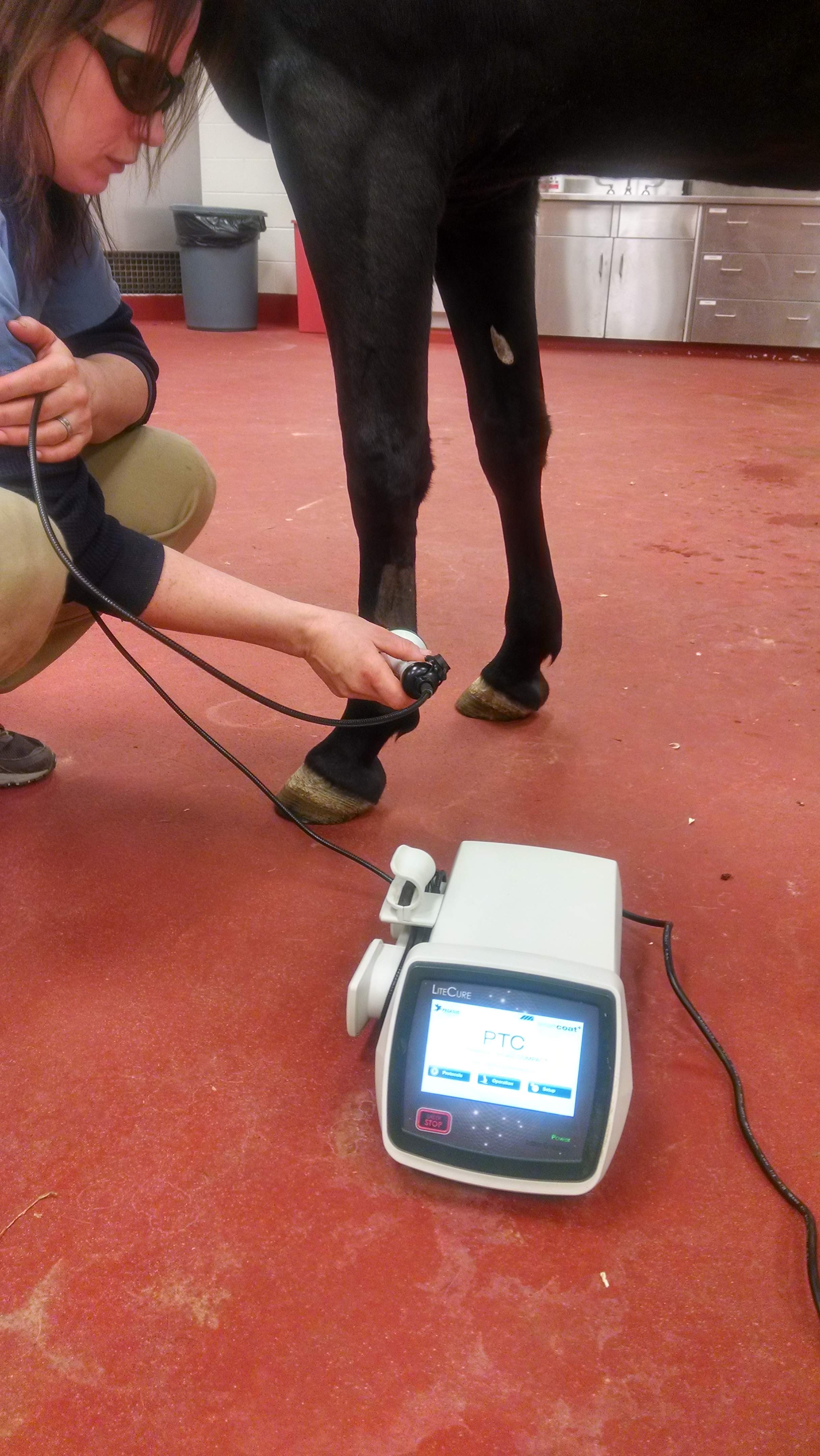Why Equine Therapy is Coming To Be a Preferred Alternative for Emotional Health
Why Equine Therapy is Coming To Be a Preferred Alternative for Emotional Health
Blog Article
Assessing the Efficiency of Laser Therapy in Horse Treatment for Injury Rehabilitation
The evaluation of laser therapy's performance in equine injury recovery hinges on multiple aspects, consisting of healing time, pain mitigation, and tissue regeneration. Vets regularly observe remarkable end results with laser treatment compared to conventional methods, placing it as an essential element in equine care.
Recognizing Laser Treatment
Laser therapy has ended up being a critical device in vet medication, particularly in the therapy of equine conditions. Known for its non-invasive nature and effectiveness, laser therapy entails the application of details wavelengths of light to boost cells repair and reduce swelling. This restorative technique is progressively preferred for its capacity to accelerate the healing procedure in steeds experiencing from a variety of bone and joint injuries and chronic problems.
The main system behind laser therapy is its ability to enhance mobile functions. When laser light permeates the skin, it is soaked up by mitochondria, the powerhouse of cells, which causes increased manufacturing of adenosine triphosphate (ATP) This biochemical power boost helps with cellular fixing and regeneration. Furthermore, laser treatment promotes vasodilation, enhancing blood circulation and oxygen distribution to damaged tissues, therefore accelerating recuperation.
In equine medicine, laser therapy is especially helpful for problems such as tendonitis, osteo arthritis, and wound healing. The technique is lauded for its pain-relieving homes, permitting steeds to regain mobility and function more quickly. Veterinarians likewise appreciate its very little adverse effects contrasted to various other therapy modalities, making it a dependable and safe alternative for equine care.

How Laser Treatment Functions

Upon absorption, these photons cause a series of biochemical changes, boosting mitochondrial feature and resulting in increased adenosine triphosphate (ATP) manufacturing. This increase in ATP increases mobile metabolism, promoting cells repair work and regeneration. Furthermore, laser therapy regulates inflammatory actions by impacting cytokine levels and reducing oxidative anxiety, thus alleviating discomfort and swelling.
Another substantial aspect of laser treatment is its role in boosting microcirculation. The therapy advertises vasodilation, improving blood circulation and oxygen shipment to broken tissues (Equine Therapy). This assists in the removal of cellular particles and supports the spreading of fibroblasts and collagen synthesis, essential for injury recovery
Medical Proof
The efficacy of laser treatment in equine treatment has actually been substantiated with numerous clinical research studies, showcasing its healing potential across a variety of conditions. A number of regulated tests and observational studies have actually recorded significant enhancements in cells fixing, pain reduction, and general recovery timelines. A study conducted by Turner et al. (2012) demonstrated that equines treated with low-level laser treatment (LLLT) for ligament injuries displayed sped up recovery contrasted to those obtaining standard treatments. The study highlighted a marked reduction in inflammation and improved collagen formation.
Likewise, study by Johnson and associates (2015) focused on equine muscle mass injuries, revealing that laser treatment substantially accelerated muscular tissue fiber regeneration and reduced muscle mass stiffness. Clinical analyses have revealed that laser therapy can minimize chronic conditions such as osteo arthritis.
Veterinarian Insights

Vets additionally view publisher site value the convenience of laser treatment. It can be utilized for a wide variety of conditions, from surface injuries to much deeper bone and joint injuries. Dr. Emily Brown highlights its energy in dealing with conditions like tendonitis and osteoarthritis, where conventional therapies frequently fail. She explains that laser therapy can be tailored to the specific needs of each steed, making certain ideal results.
Furthermore, vets value the capacity to incorporate laser treatment with other therapy methods. This multimodal method can boost general treatment efficacy, giving a thorough remedy for equine rehab. Such endorsements from seasoned professionals emphasize the growing approval and application of laser treatment in equine medicine.
Practical Factors To Consider
A crucial element of executing laser therapy in equine therapy entails understanding the sensible considerations that guarantee its effectiveness and safety and security. Most importantly, it is critical to choose the suitable laser device, as various kinds vary in wavelength, power, and penetration deepness. Equine Get More Information Therapy. Veterinarians need to be fluent in these parameters to tailor therapy procedures effectively to every injury kind
Furthermore, the regularity and duration of laser therapy sessions need mindful planning to make best use of healing benefits while lessening any type of possible adverse impacts. Constant surveillance of the horse's reaction to treatment can lead needed adjustments in the therapy program. Developing a secure and controlled atmosphere during treatments is also important to protect against unintentional exposure to laser emissions, which might harm both the equine and the handler.
Training and accreditation of workers carrying out laser treatment are extremely important to make certain appropriate strategy and to copyright safety standards. Additionally, keeping exact documents of each session, consisting of laser settings and observed outcomes, is essential for reviewing the general performance of the treatment and for making data-driven choices.
Verdict
Laser treatment has arised as a reliable technique in equine injury recovery, offering substantial advantages in healing time, pain relief, and tissue recovery. For optimal outcomes, constant tracking and personalized therapy protocols stay necessary in leveraging the complete capacity of laser therapy in equine care.
Report this page